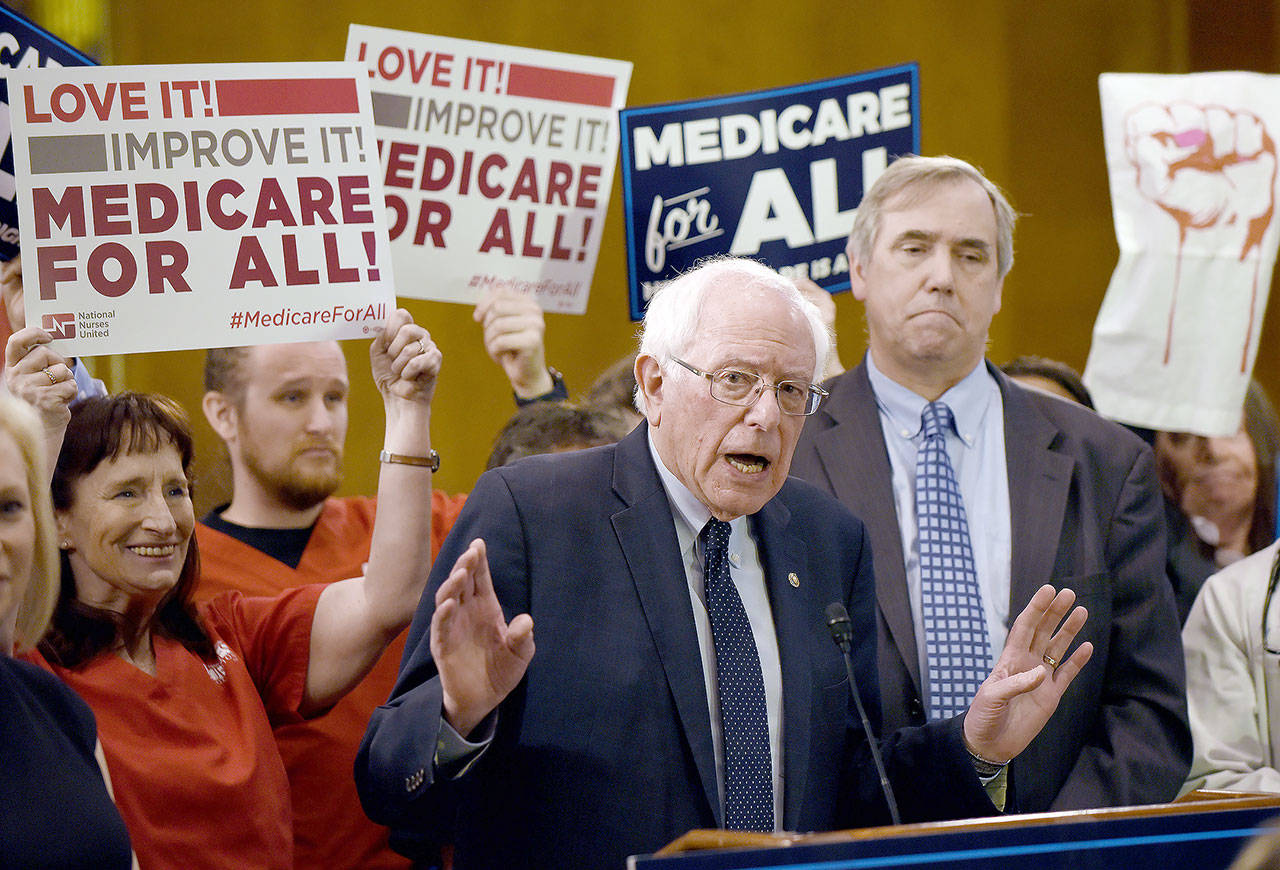By Mary Ellen McIntire
CQ-Roll Call
WASHINGTON, D.C. — Sen. Bernie Sanders on Wednesday released an updated bill to implement a single-payer health insurance system, legislation that is politically divisive and will be a hallmark of his White House bid.
The unnumbered Senate bill would transition the U.S. health care system to a single-payer system over a four-year transition and eliminate nearly all premiums, copays and deductibles. The legislation largely mirrors Sanders’ 2017 proposal, but the new plan also would cover home and community-based long-term care services through an expanded Medicare program, according to a summary. The earlier version would have maintained those services through existing Medicaid benefits.
The “Medicare for All” concept, which the Vermont independent ran on during his unsuccessful 2016 presidential campaign, has become more popular since then. Still, as of Tuesday night, Sanders’ single-payer bill had secured just 14 Democratic Senate co-sponsors, fewer than the 16 that signed on by last year.
His bill comes after other Democrats have offered their own proposals to expand health insurance coverage, such as allowing people to buy into Medicare or Medicaid or creating a Medicare-run public option to be sold on the exchanges created under the health care law.
The biggest change from Sanders’ previous bill —to expand long-term care services —in part mirrors a House bill introduced by Rep. Pramila Jayapal, D-Wash., earlier this year. Sanders’ proposal would cover home and community-based care through the expanded Medicare program, but care provided in an institution, such as in a nursing home, would continue to be covered through Medicaid. Jayapal’s bill would cover all of that through the universal Medicare program. That change earned significant support from disability advocates.
The Medicare program envisioned through Sanders’ and Jayapal’s plans would be a significant expansion of the program as it exists today. It would cover mental health care, vision and dental, emergency transportation and substance abuse treatment, among other things.
Sanders proposed a four-year phase-in, so the qualifying age for Medicare would fall from the current 65 by a decade each year. That’s slower than the two-year transition under Jayapal’s measure.
During that transition, people could buy into the program. People currently enrolled in federal health programs would transition into the universal Medicare program, although the Indian Health Service and the Department of Veterans Affairs would both stay independent for at least a decade.
All health care providers would be required to sign a participation agreement that would ban discrimination on issues including race, national origin, income, religion, age, sex or sexual orientation, disability or illness. Providers would be paid based on the existing Medicare fee schedule and existing alternative payment methods created under the 2010 health care law and a 2015 Medicare overhaul law would continue.
That differs from the House bill, under which hospitals would be paid through a global budget that would pay institutions regular lump sums throughout the year to cover care, while individual providers would be paid on a fee-for-service payment schedule.
Sanders’ bill would also create a national health budget to cover the cost of services delivered under the act and make other payments, including public health activities, capital expenditures and administrative costs. For the program’s first five years, that budget may also cover transition assistance to workers affected by the change to the insurance industry. It would establish a trust fund for the program to cover issues such as public health emergencies.
The plan would require Medicare to negotiate prescription drug prices and establish a drug formulary, while allowing patients and providers to petition for certain drugs to be on or off the formulary.
While the bill would eliminate premiums and deductibles, enrollees would still face a $200 maximum copay each year for prescription drugs.
The plan would ban the Hyde amendment, which prohibits federal funds from covering abortion in most cases.
The program would be run by the Health and Human Services secretary leading the new Universal Medicare Agency, along with six other people to be confirmed by the Senate.
Sanders’ bill does not lay out how the measure would be financed, but in a separate white paper he argues that funding the program would be repurposing current spending. The average family would save thousands of dollars annually without out-of-pocket spending on health care, he says.
Still, families would likely face higher taxes to finance a single-payer system.
Some ways he’s proposed to pay for the bill include a 4 percent income-based premium paid by employees that exempts the first $29,000 for a family of four, a 7.5 percent income-based premium on employers that exempts the first $2 million in payroll, making the federal income tax more progressive, or establishing a tax on extreme wealth.


